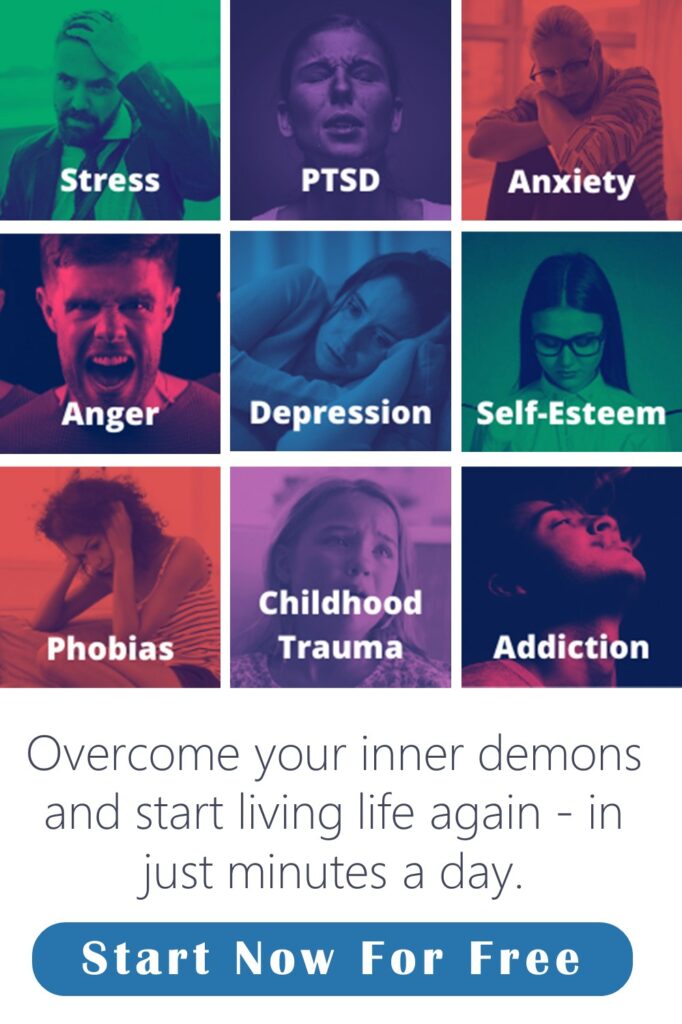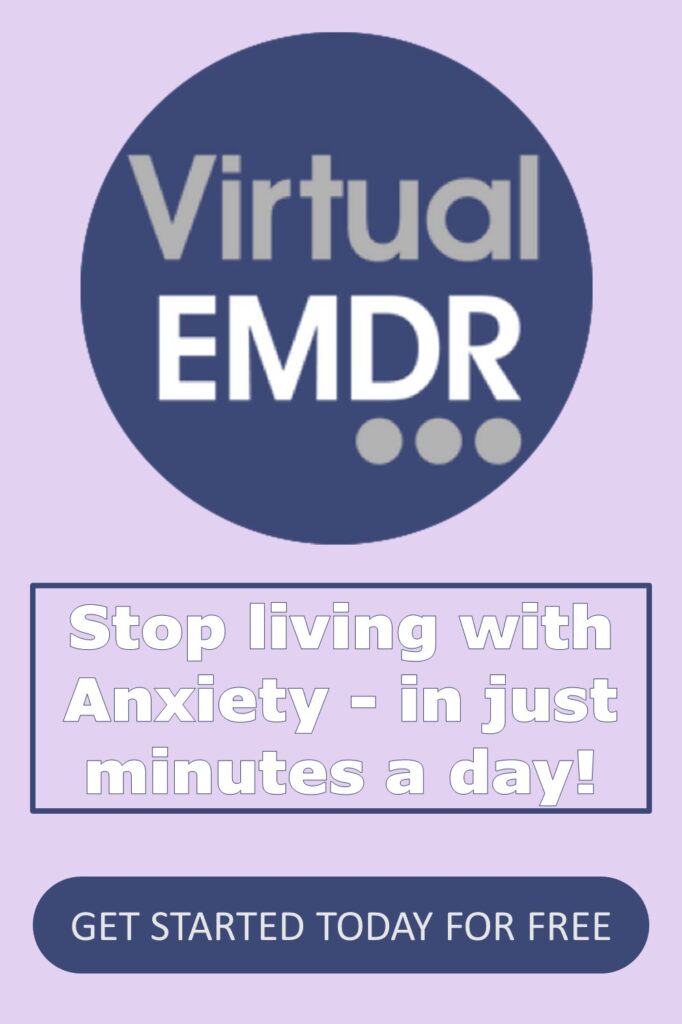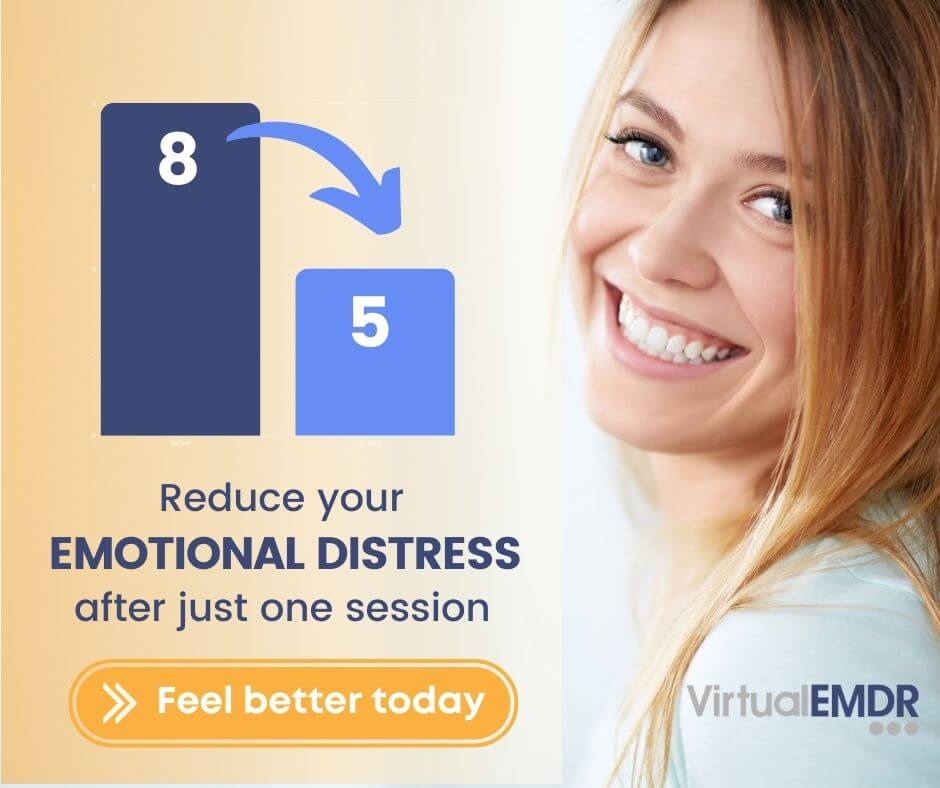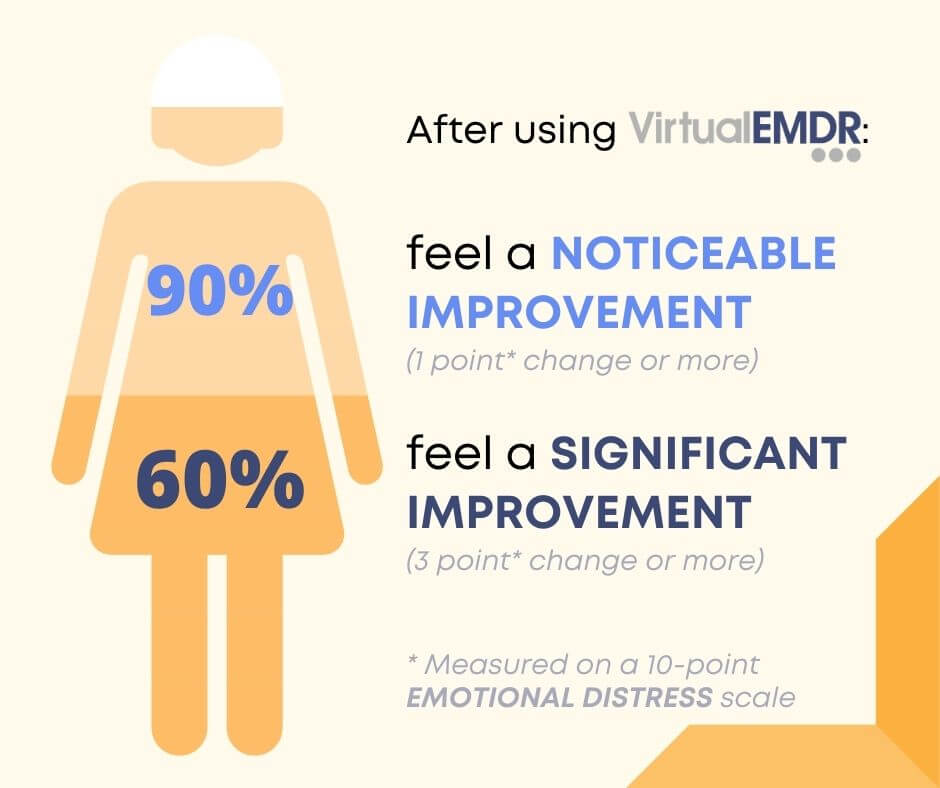
Whether you are somewhat familiar with EMDR therapy, know nothing about it, or know enough already to get started, this introduction to EMDR therapy will help inform you on the basics of what this therapy is, how it works, what conditions it can treat, how it can help you, and introduce you to an amazing program that guides you through doing EMDR virtually from home!
Table of Contents
What Is EMDR Therapy?
Eye Movement Desensitization and Reprocessing (EMDR) is a psychotherapy treatment that encourages the brain’s own natural information processing systems to complete emotional healing when exposure to past trauma. EMDR is an integrative psychotherapy approach and uses psychotherapy with patients to address mental health concerns. EMDR encourages the brain’s own natural information processing systems to complete emotional healing when exposure to past trauma.
Many people try to address mental health issues with traditional talk therapy, but this is ineffective as it involves a lot of time and mental effort. With EMDR therapy, you do not need to talk in-depth about your issues, which can cause further trauma. This is a type of somatic healing, which focuses on using the body rather than working out problems intellectually. The video below explains this in further detail.
What Conditions Does EMDR Work For?
Many mental health conditions can be successfully treated with EMDR. Common conditions include, but are not limited to:
- PTSD (including Complex PTSD)
- Anxiety
- Panic Attacks
- OCD
- Eating disorders
- Phobias
- Depression
- Addiction
- Grief
- Childhood Trauma
- Anger
- Stress
How Long Does EMDR Take To Work?
EMDR can work quickly for some individuals in only a couple of sessions. For others, it may take several sessions to complete the treatment. Many people report that they notice a reduction in symptoms in the first session.
What Happens in a Typical EMDR Session?
The therapist will first explain the EMDR approach to the client. The client and therapist then identify and focus on a specific distress that the client wants to target with EMDR. Then the therapist guides the client through a series of eye movements, auditory tones, and/ or hand touches on both sides of the client’s body. The client is encouraged to let their thoughts go with the stimulus in order to help their brain process the distressing memory.
How Successful is EMDR?
Research supporting EMDR shows a positive success rate between 70-90%. This means that most of the people, or a high percentage, show improvement in the targeted concerns after completing EMDR treatment sessions. EMDR is an effective treatment that is well backed up by research and has positive success rates.
Who Should Not Do EMDR?
EMDR is not recommended for individuals under the age of 12 years old due to their lack of cognitive development. EMDR should also be avoided if the client has severe unmedicated schizophrenia or a current psychotic episode. In addition, it is not recommended for individuals who have severe and uncontrolled substance abuse disorder or who have significant medical issues.
If there are any concerns about trying EMDR or if there are questions about whether EMDR is safe for an individual, it is recommended to consult with a licensed professional.
Can You Do EMDR At Home?
While it is generally recommended to do EMDR therapy in person, there is a program online designed to walk people through the EMDR process right from home!
Virtual EMDR is a self-guided program that has been developed by EMDR practitioners and neuroscience experts. It provides step-by-step guidance with the beginner in mind, walking you through each step of the process.
There are videos, worksheets, and optional coaching sessions if you need further assistance. This online program is a godsend for many people who have no access to therapy, cannot get to an in-person practitioner, wish to remain anonymous, or need something that is available 24/7.
Get Started With EMDR Today
You can sign up for a free trial, and after that it is $69 a month for an unlimited number of sessions. But most people will not need to continue with the program once they have seen results, so long-term costs are not an issue.
This page includes affiliate links. This only means that I get a small commission, at no cost to you!
Share on Pinterest!





